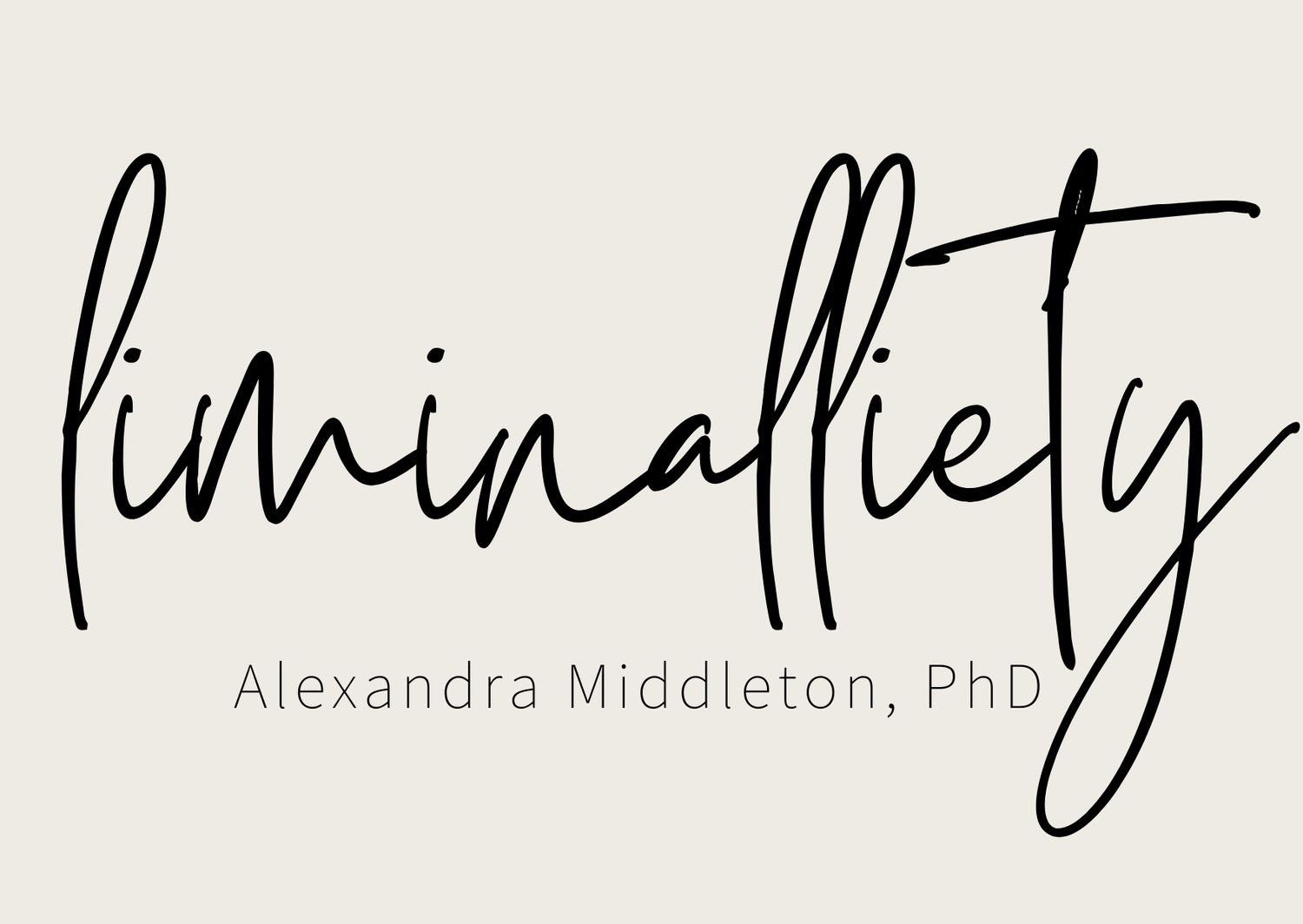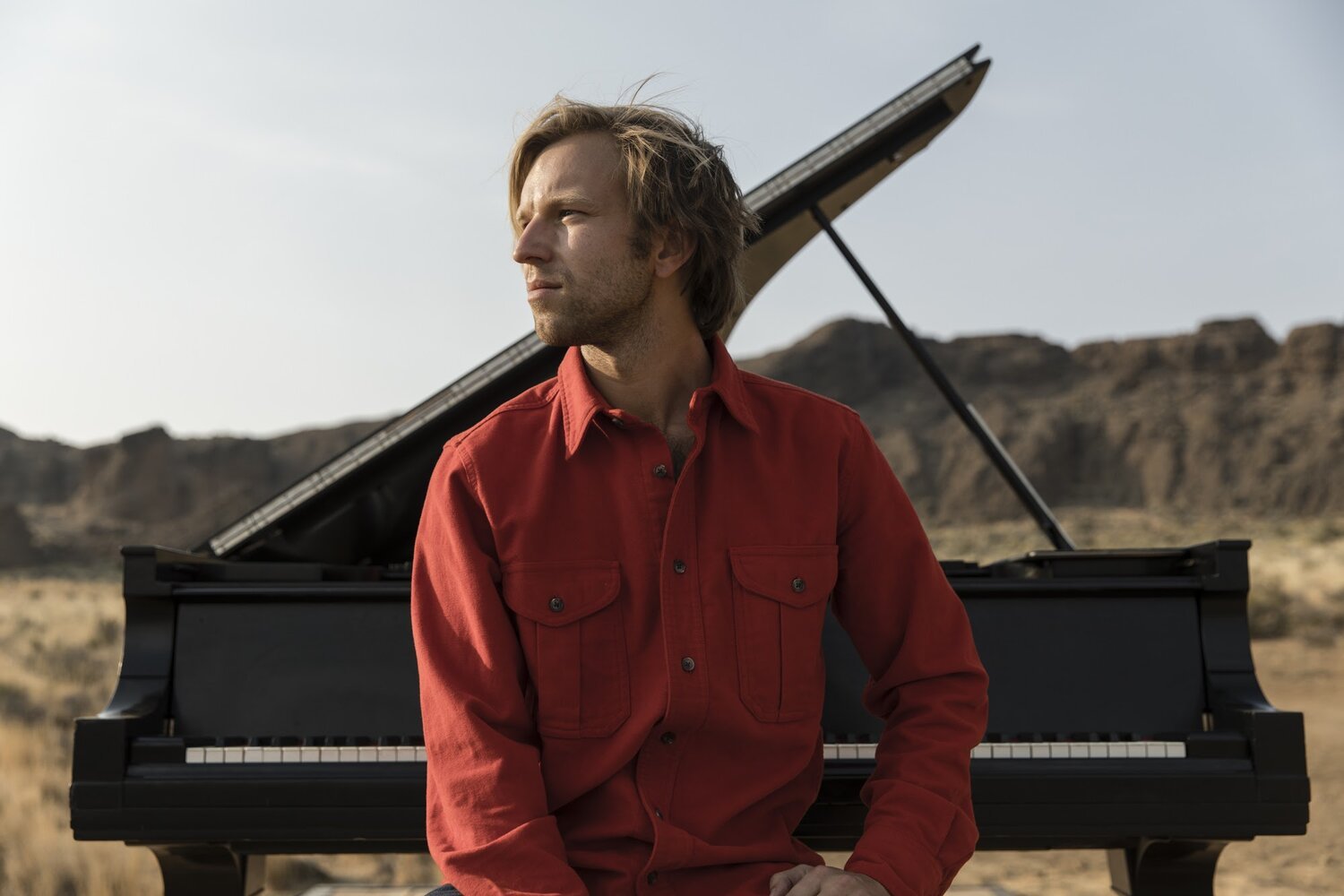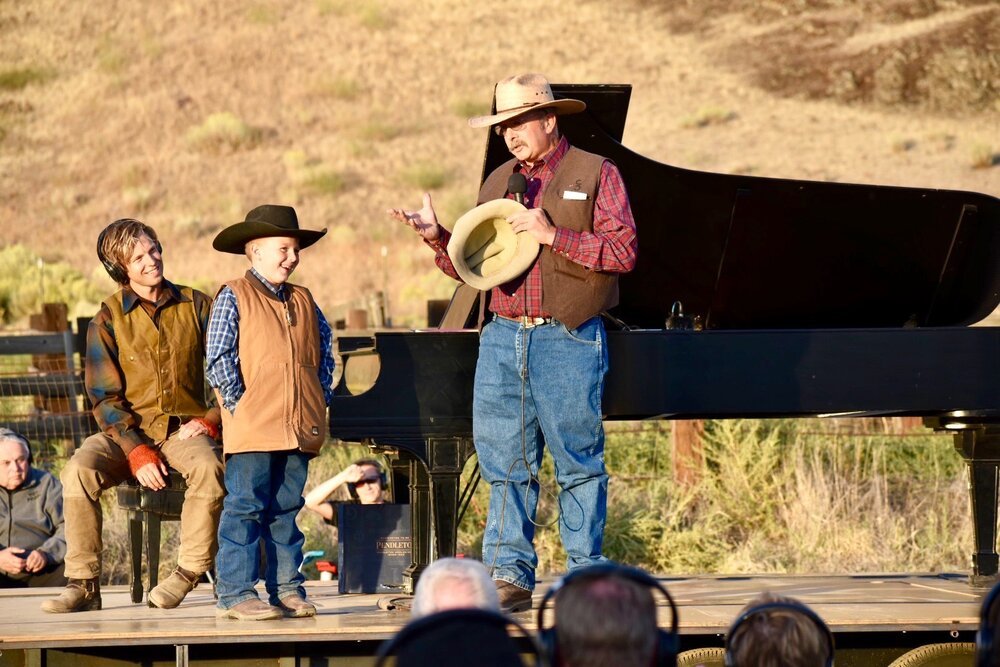Hunter Noack :: Classical Piano in the Wild
The words “concert piano” typically conjure up the image of a grand concert hall, perhaps an accompanying orchestra, pressed white-collared shirts and coattails… but most certainly not a flatbed truck kicking up dust as it rattles across the salt flats of central Oregon, desert winds, or the soft hum of wildlife that crescendos as the sun descends over distant mountaintops. Yet amidst these remote landscapes is exactly where you can find Hunter Noack, an award-winning classical pianist, sharing the music of Franz Liszt, Maurice Ravel, and others dancing through his fingertips.
Hunter, an Oregon native and dear friend of mine, brings classical music to the spaces, places, and ears most traditionally distant to it—the wild landscapes and rural communities of the Western US—with his traveling outdoor concert series IN A LANDSCAPE: Classical Music in the Wild, inspired by the Works Progress Administration’s Federal Music Project (FMP) which illuminated the dark years of the Great Depression with free concerts on public lands. Concert guests are given wireless headphones, allowing them to freely wander, roam, and even ski (!) the landscape, carrying Hunter’s music with them. IN A LANDSCAPE makes possible a truly embodied integration of land and sound.
I recently had the chance to catch up with Hunter and am thrilled to share our conversation below as the first installation of T H E | L I M I N A L ‘s PORTRAITS series—featuring artists, musicians, thought-leaders and healers who are changing the landscape and horizon of creative work. Enjoy!
Hunter at Smith Rock State Park, Oregon. photo credit: Zach Lewis
You've traveled with your 9-foot Steinway grand piano on a flatbed truck to play in such remote sites as The Alvord Desert salt flats, Crater Lake National Park, and Big Sky, Montana where guests spend the hour skiing on a groomed series of trails around the piano… Historic ranches and farms, arboretums, botanical gardens, urban parks, victims of wildfires, Oneonta Tunnel, which also burned in the Gorge Fire 2019.
What is the wildest location you dream of playing your piano in?
I’d love to play in more National Parks. As Ken Burns titled in his inspiring documentary, our national parks are, “America’s Best Idea.” As a white male and son of a country built on the genocide of indigenous nations, I am aware of my privilege, waltzing around the country towing a grand piano — a classic symbol of western art and culture. But set among the trees, accompanying my friend and colleague James Edmund Greeley, a Native American flutist, this symbol of oppression holds new meaning. It is a symbol of listening, of cooperation, friendship, and new solutions to old problems. And while this magic happens in the most modest of parks, the National Parks System represents an idea bigger than the 423 sites and 84 million acres they encompass: the democratic idea that these most magnificent places are to be shared by all of us.
Click here for a complete list of the places In A Landscape has performed.
Hunter ghost riding the whip in the Alvord Desert. Watch all the way to the end for an unexpected surprise!
Hunter performs with friend and colleague James Edmund Greeley, a Native American flutist.
You've said that In A Landscape was originally inspired by a Great Depression-era initiative the Works Progress Administration's Federal Music Project, which featured free concerts on public lands.
What was it about the era you first conceived of this idea (2016) that inspired this return to public lands and access to art? And how have the events of the past year (2020) influenced or changed the project and its meaning?
“HELL, THEY’VE GOT TO EAT, TOO,”
said Secretary of Commerce Harry Hopkins about the 40,000 artists employed under the Works Progress Administration umbrella. Thousands of murals painted, songs written, and FREE concerts and plays were presented in public lands. In this government stimulus plan the arts were seen to be as important to the overall health of the society as roads and post offices. That inspired me.
Cowboys at piano (photo credit: Cameron Edens)
It was 2016 and I had just moved back to Oregon from London, England. I was jobless and spending time in our state in national parks, enjoying many of the trail systems created by the WPA. Feeling tremendous appreciation for these assets and our public lands, I wrote a proposal to Regional Arts and Culture Council which awards small grants to individual artists, funded in part by a local arts tax. My proposal was to present 3 classical piano concerts at WPA sites that were free to the public. The audience would be given wireless headphones so they could wander through the landscape with the music as a soundtrack to their experience. The 3 concerts grew to 9 sites (including WPA site Timberline Lodge) and was a big hit.
We carried on, each year growing. To date presented 109 concerts in parks, ranches and farms in the Pacific Northwest for an audience of over 13,000, of which 46% attended for free.
…AND THEN 2020 CAME ALONG.
We cancelled 50 shows in the spring then started ramping up in the late summer and now we’re back to full steam ahead. We’re very lucky that our format is inherently socially distanced, so with a few minor changes we were ready to roll in the COVID landscape. One new opportunity now is putting artists back to work because we are one of the few performing arts groups that can safely and effectively hold events. While the ballet, the symphony, opera remain shuttered, we have the infrastructure to jump back out there and make music. So, our great challenge this year is not to become overwhelmed by the innumerable possibilities.
We are lining up a full season of 40+ concerts beginning summer 2021 that will feature classical piano music and guest musicians of all walks: dancers, poets, visual artists, and musicians from baroque to folk. Our concert model will remain as close to the WPA spirit as possible by offering free and low-cost tickets in primarily rural areas on public lands. I hope we will be an example of a program reminiscent of the New Deal, one that that brings communities together and puts artists back to work.
Relatedly, what, in your opinion, is the role of art / the artist in today's world?
Piano at Summer Lake (Photo credit: Cameron Edens)
“You know what the fellow said – in Italy, for thirty years under the Borgias, they had warfare, terror, murder and bloodshed, but they produced Michelangelo, Leonardo da Vinci and the Renaissance. In Switzerland, they had brotherly love, they had five hundred years of democracy and peace – and what did that produce? The cuckoo clock.”
- Graham Greene The Third Man
The role of an artist is dependent on both the artist and their environment. My purpose is to encourage listening. Not just to music but to nature, to each other, to one’s own heart. I want to create spaces where people can tap into that wisdom and feel the magic, if only for a moment.
What’s been bringing inspiration to your daily life / art lately?
Last fall I separated from my partner. We’re back together again, and we have a stupendous therapist, but for a time I was alone and living in Summer Lake. Rural as it is, I had internet on my phone, so I downloaded every single dating app. I didn’t see too many people anyway because of COVID but most of my potential mates lived in other states or countries, so they became my muses. Inspired by a handful of profile pictures and their captions, I’d write poems, create drawings, music — small gestures of no consequence to win over these fictional characters and was tremendously entertained.
Summer Lake landscape (photo credit: Hunter Noack)
Can you tell us about a “liminal” moment or period (threshold) that has defined you, your life, your identity, your work?
Summer Lake is in the sprawling landscape Oregon’s high desert, a remote area with bright stars, thousands of acres of sage brush desert and a seasonal lake at the edge of the Great Basin. I had driven by Summer Lake a handful of times as a child to go fishing on the Chewaucan River with my dad and never gave it much thought. It was big, open, dry. But in 2017 we did a concert at an arts and science residency program there called PLAYA and I began to feel the deep sound of the landscape. Since the beginning of March 2020, I have been living there watching the seasons change, the grasses turn from lime green to golden, silver and purple. I feel that I am —very slowly— becoming more myself by being regularly gobsmacked by the beauty and stillness and magnitude of the land under the restless sky. In the 1930’s Luther Cressman uncovered human remnants that radiocarbon dated to 14,300 years ago— the oldest definitively-dated human presence in North America. He found them in the Paisley Caves, which sit about 6 miles from me due East, just across what is left of the dying lake.
…FROM MY LIVING ROOM, LOOKING EAST TO WATCH THE SUNRISE OR THE LIGHT OF THE SUNSET ON THAT HISTORIC SITE, I SEE NO SIGN OF HUMAN LIFE.
No roads, no lights, no houses, no cattle until the ridge meets the horizon 40 miles away. This has been my liminal space.
Hunter plays Franz Liszt’s Liebestraum at Summer Lake.
If you are interested in attending a future IN A LANDSCAPE performance in 2021, you can find more information on their website. If you’d like to support Hunter’s goal to offer as many free concert tickets as possible to IN A LANDSCAPE, consider offering a donation.
You can follow Hunter here and IN A LANDSCAPE here. Thank you, Hunter!





